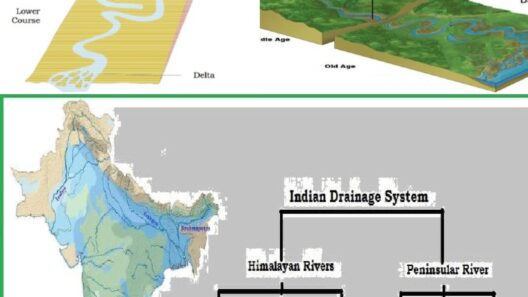The surface of Mars, often referred to as the Red Planet, presents a stark and inhospitable environment that evokes both curiosity and apprehension. Enigmatic in nature, Mars captivates scientists and laypersons alike, drawing attention to its frigid climate and desolate landscapes. Understanding the climate of Mars is not merely an academic pursuit; it holds implications for our comprehension of planetary science, astrobiology, and even the future of human exploration beyond Earth.
Situated approximately 140 million miles from the Sun, Mars experiences a climate that is fundamentally different from our own. The thin atmosphere, composed mainly of carbon dioxide, offers minimal insulation, resulting in drastic temperature fluctuations. The Martian atmosphere is only about 1% as thick as that of Earth, which contributes to its characteristic coldness. Daytime temperatures near the equator can reach a fleeting 70 degrees Fahrenheit (20 degrees Celsius), only to plummet to infernal lows of -195 degrees Fahrenheit (-125 degrees Celsius) at the poles during winter. These extremes prompt us to ponder: how could any life form potentially adapt to such relentless conditions?
One of the most compelling features of Martian weather is its dust storms, which can envelop the planet for days or even weeks. These storms are not merely a nuisance; they serve as a profound reminder of Mars’s volatile conditions. Visibility can diminish dramatically, creating a hazy atmosphere that obscures the surface. During such storms, temperatures can drop further, exacerbating the planet’s already frigid climate. This phenomenon raises questions about the potential for human habitation—would we be able to endure prolonged periods within these tumultuous atmospheric conditions?
The inclination towards fascination with Mars stems from its tenuous similarities to Earth. Despite being an arid desert, evidence suggests that liquid water once flowed across its surface. Geological formations, including riverbeds and lake sediments, point to a comparatively hospitable past. However, the present-day Martian climate is largely devoid of liquid water, relegating it to icy polar caps and subsurface glaciers. The interaction between Martian weather and its geologic history fosters intriguing hypotheses regarding the planet’s climatic evolution and the potential for ancient microbial life.
The axial tilt of Mars is another salient aspect that influences its climate. With a tilt of approximately 25 degrees, Mars experiences seasons much like Earth does. However, given its eccentric orbit, these seasons are prolonged compared to those on our home planet. For instance, summer in the northern hemisphere can last about twice as long as summer in the southern hemisphere. This annual cycle undoubtedly affects how volatile weather patterns manifest, contributing to the complexity of Martian climate systems.
Temperature distribution on Mars is uneven, with equatorial regions being significantly warmer than the poles. This temperature gradient has implications for weather patterns and may even give rise to localized meteorological phenomena. Martian nights can be exceedingly cold, creating conditions conducive to the formation of frost and possibly even localized ice clouds. The exploration of such weather patterns piques scientific interest, as it might unveil dynamic processes that mirror those found on Earth, albeit at a different scale.
One must also consider the impact of solar radiation on Mars’s atmosphere. With a thin atmosphere that offers little protection, the planet is bombarded by solar and cosmic radiation, making its surface less hospitable for potential life forms. This exposure has implications for future manned missions, as adequate shielding must be devised to mitigate health risks for astronauts. Consequently, this aspect of Martian climate becomes crucial in discussions surrounding human colonization and our ambitions of interplanetary expansion.
Furthermore, recent studies have ignited discussions regarding the presence of transient brines on the Martian surface—dark streaks that could be indicative of liquid water under specific conditions. While these findings are stimulating, they also highlight the inherent complexities of understanding Martian climatology. If active processes are occurring, this could suggest that even within the frigid desert, there exists an enigmatic dynamism waiting to be understood. Thus, the Martian climate beckons not only scientific inquiry but imaginations fueled by hopes of uncovering life beyond Earth.
In considering Mars’s cold reality, one cannot overlook its potential for human exploration. As we endeavor towards interplanetary travel, the lessons garnered from Mars’s unforgiving climate could offer blueprints for survival. Whether through the construction of habitats designed to withstand extreme temperatures or systems capable of harnessing Martian resources, the challenges posed by its climate are invitations for ingenuity and innovation.
While the Red Planet may seem a barren wasteland, its climate serves as a canvas for exploration and understanding. The juxtaposition of its harsh environment with the tantalizing possibility of past water flows continues to fuel the scientific dialogue surrounding its potential for habitability. Mars stands as a testament to the complexities of climate as it not only shapes landscapes but also governs the story of potential life beyond Earth. The cold reality of Mars compels us to reconsider our understanding of life, resilience, and the very act of exploration. In doing so, it might reveal not only the secrets of the Red Planet but indeed our place within the cosmos.








